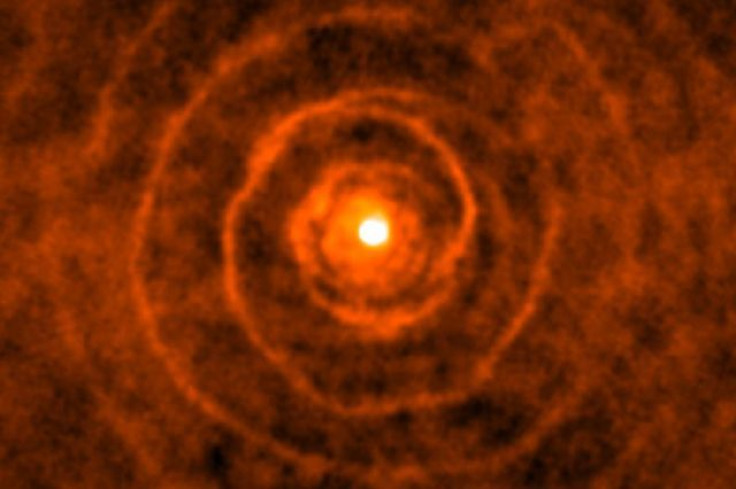Dying Red Giant Star Showed A Spiral Pattern Of Gaseous Emissions

The sun is about half-way through its life in its current phase as a main sequence star, and about 5 billion years from now, it will expand into a red giant star. And eventually, that phase will end as well, and the sun will shed its outer layers, likely becoming a white dwarf in the end.
And while we won’t be around to see all that happen, an international team of astronomers have observed a red giant in the throes of death, as it loses its mass and radiates cold molecular gas. The observation, made using Atacama Large Millimeter/submillimeter Array (ALMA) telescope in Chile, showed a “striking spiral pattern” of gas emissions around LL Pegasi and its companion star about 3,400 light-years from Earth.
Led by Hyosun Kim of Taiwan’s Academia Sinica Institute of Astronomy and Astrophysics, the research team concluded that the spirals of the gaseous emissions from the binary star system were caused by the highly elliptical orbit of the system.
Read: A Nearby Red Hypergiant Could Be Among The Biggest Stars Found
“What we are seeing in splendid detail with these observations is the final act of a dying red giant star, as it sheds most of its gaseous bulk in a strong, outflowing wind. … Because of the orbital motion of the mass-losing red giant, the cold molecular gas constituting the wind from that star is being spun out like the sprays of water from a rotating garden sprinkler, forming the outflowing pattern of spiral shells,” Mark Morris, professor of physics and astronomy at the University of California, Los Angeles, and a co-author of a recent research paper on the matter, said in a statement Thursday.
The research was published in the March issue of the journal Nature Astronomy under the title “The large-scale nebular pattern of a superwind binary in an eccentric orbit.”
© Copyright IBTimes 2024. All rights reserved.











